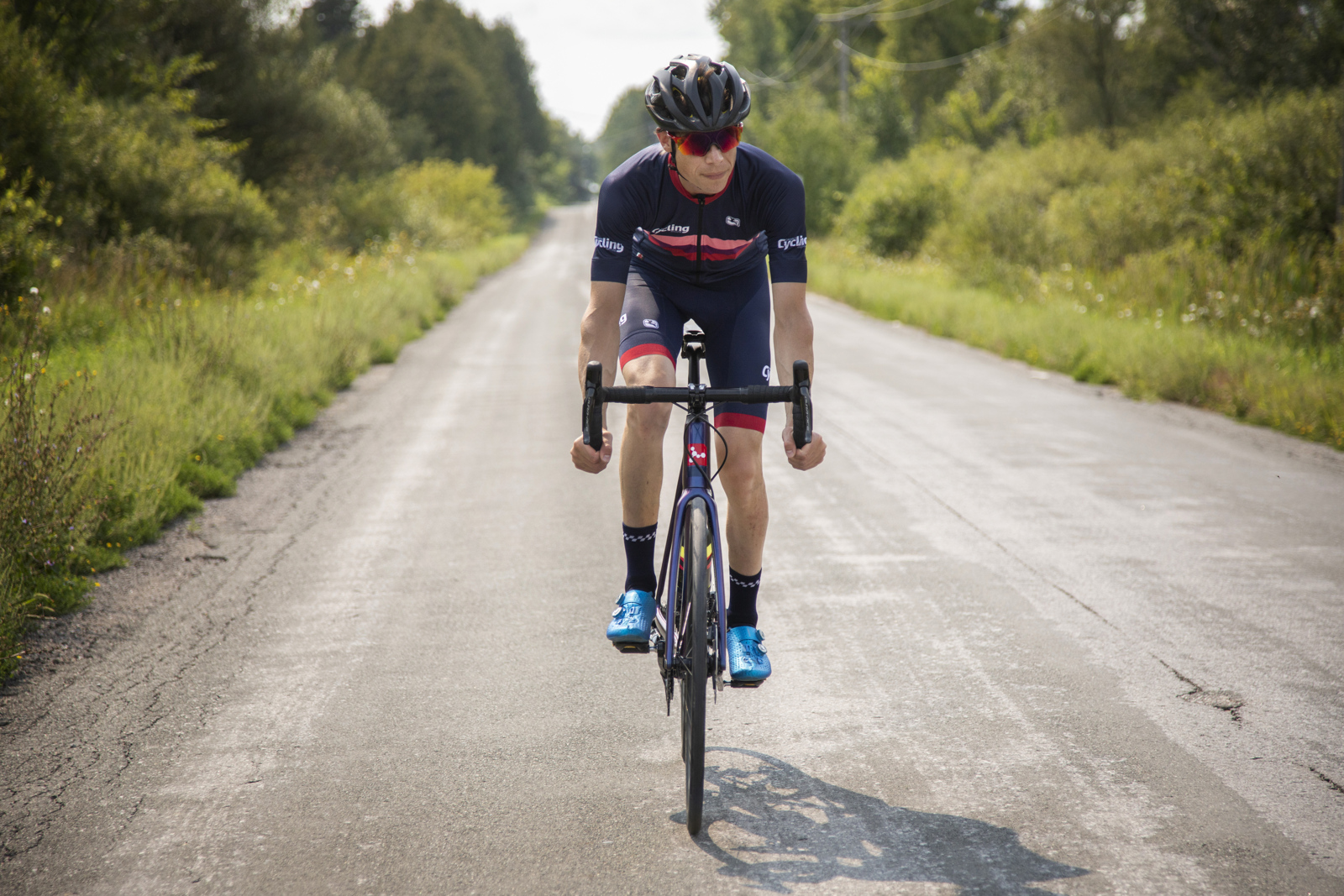Shimano Dura-Ace R9200: Features and first impressions of the new series
The top-end road group gets wireless shifting, 12-speed cassettes, new wheels and more
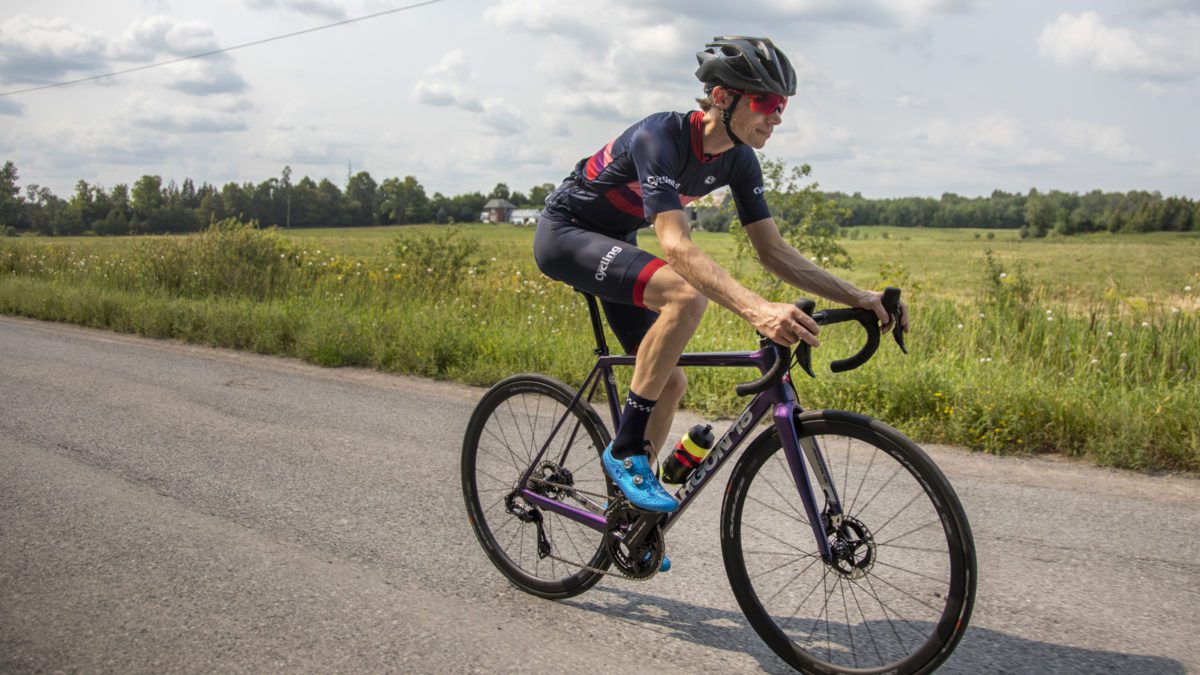 Photo by:
Nick Iwanyshyn
Photo by:
Nick Iwanyshyn
The new Shimano Dura-Ace R9200 groupset is here. In the year of the Japan-based company’s centennial, it has relaunched its top-of-the-line road group. When cycling’s biggest component maker does anything, it’s notable. When it comes out with a new Dura-Ace, you have to wonder how the best groupset can get better. It’s a bit head-spinning really. The R9100 and R9150 Di2 series were as close to flawless as you could get with a road groupset. The Dura-Ace R9200 series is better. So what does that make it? Flawlesser? More flawless? Here’s a look at the new gruppo – with its wireless shifting and 12-speed cassette – along with background from the people behind it, as well as my first impressions on its performance and features.
Going wireless with the Dura-Ace R9200 group
The Dura-Ace R9200 groupset loses some wires. Shimano has developed its own wireless protocol that moves signals from the shifter buttons at the levers back to the rear derailleur. For shifts at the chainrings, the rear derailleur sends that information to the front derailleur.
RELATED Weights and Canadian pricing for the new Shimano Dura-Ace R9200 group
There are, however, still some wires. As with the R9150, there’s a battery in the seatpost. The new DN300 battery has wires: one runs to the front derailleur and one to the rear. The setup ensures that the activities that require the most energy—the shifts—have a strong, reliable and secure power supply. Shimano says the battery lasts about 1,000 km on a single charge depending on your riding style, location and temperature. Over in each lever is a CR1632 coin-cell battery to power the wireless signals. Each battery will last 1.5 to 2 years.
If you are looking for a mechanical version of the Dura-Ace, you won’t find one. Electronic shifting only.
Shimano says that with the new Di2 system, along with improvements in the derailleurs and the drivetrain, the shifting is faster. The rear derailleur’s shifting time has improved by 58 per cent, while the front derailleur sees an improvement of 45 per cent.
The wireless system enters sleep mode when it’s not in use. The first click of any shifter button wakes the system up. The next click will produce the first shift. It takes a bit of getting used to. I’ve left by building and gone maybe 300 m before needing to make a shift. I click a button. Nothing. Click again: whirr, click. As sleep modes go, it’s pretty deep. Clearly movement won’t wake it up. The advantage of this system should be that a wireless Dura-Ace bike won’t be coming in and out of sleep mode—using up battery life—as it gets jostled in transport.
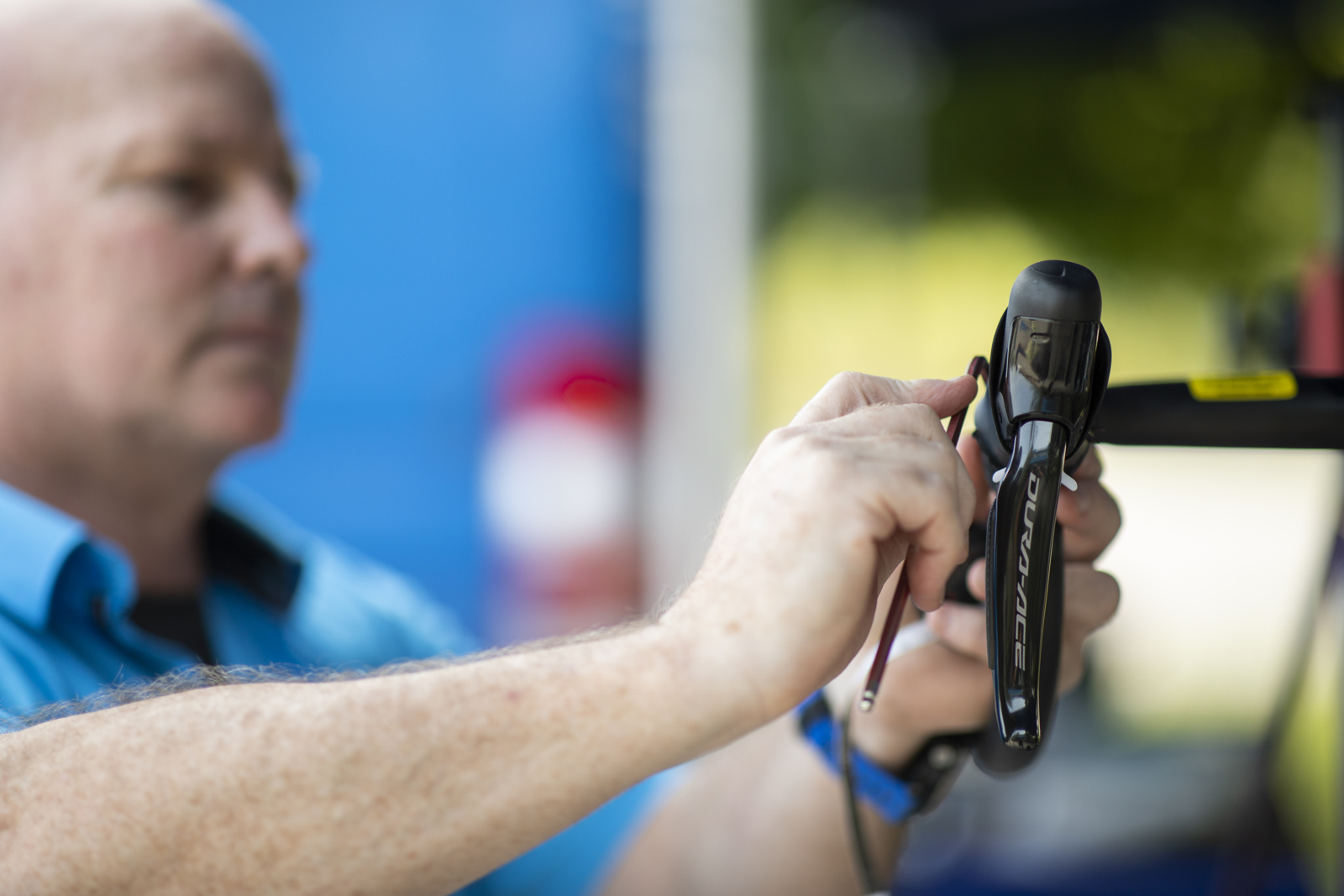
A few weeks ago, I watched as Ben Pye of Shimano Canada marketing built up an Argon 18 Gallium Disc frame with the new Dura-Ace groupset. He pointed out that under each lever hood, there’s a QR code. With these codes and the new Shimano app (Version 5), he was able to pair the shifters to the rear derailleur easily. You’ll also want to use this app to customize your shifting speed and features such as Syncro Shift.
12-speed cassettes of the Dura-Ace R9200 series
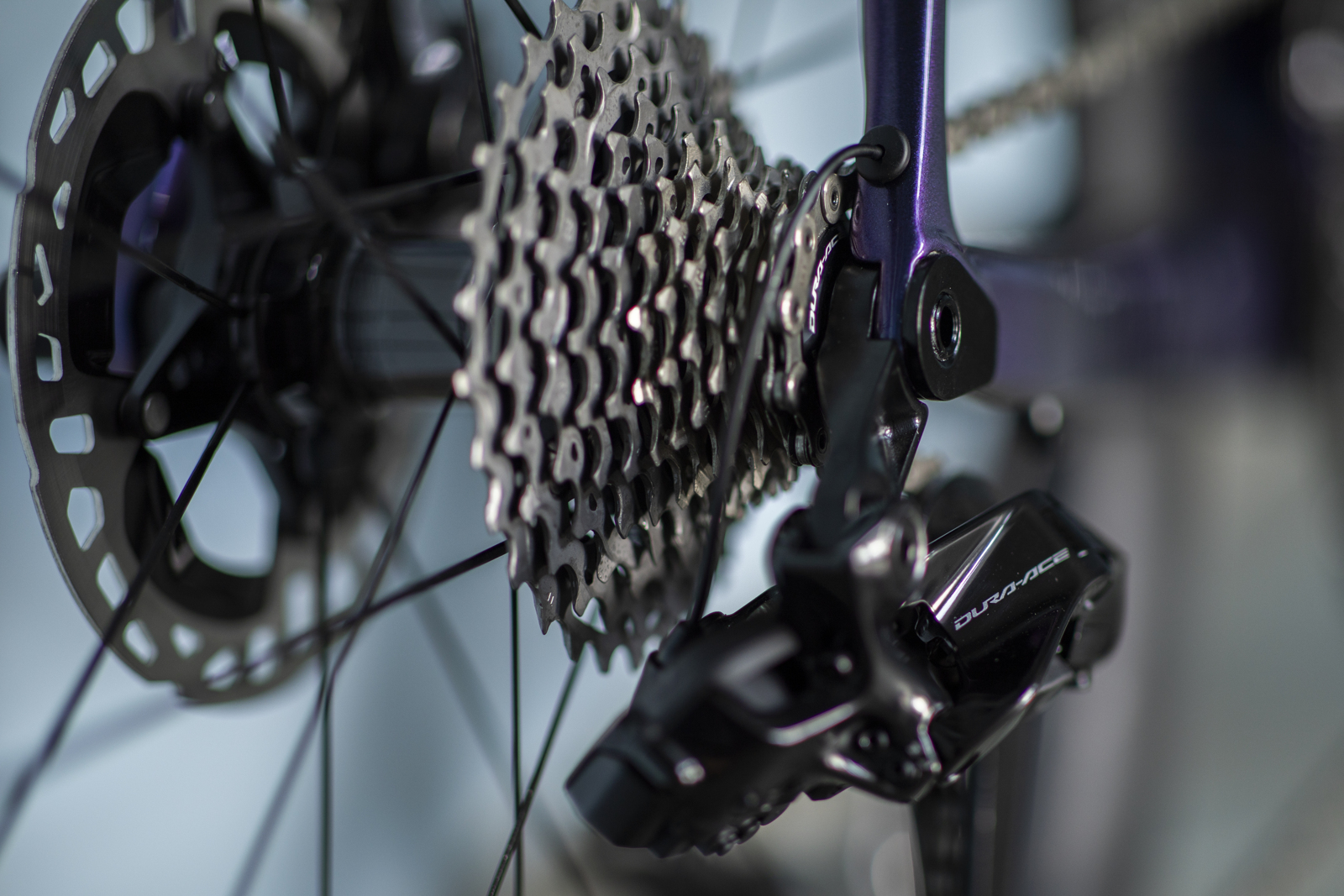
The Dura-Ace group now has 12-speed cassettes. At launch there are 11-30 and 11-34 options. The 11-30 has the following cogs: 11, 12, 13, 14, 15, 16, 17, 19, 21, 24, 27, 30. The 11-34 sprockets are 11, 12, 13, 14, 15, 17, 19, 21, 24, 27, 30, 34. On the 11-30, Shimano identifies the 15-, 16- and 17-tooth cogs as the sweet spot. “Adding that 16 gives you that sweet spot where you tend to spend a lot of your time, especially on flat and rolling terrain,” says Dave Lawrence, Shimano road product manager. “In a competition, sometimes if you’re not as strong as your fellow racers, a two-tooth jump can be the difference in staying with the group or getting dropped.”
The five larger cogs are made of titanium, while the smaller seven are steel.
Stealing from the mountain bike side
Designers on the road side seemed to have perused the workshop of their mountain bike colleagues and lifted what they liked. That’s a good thing for roadies. The Dura-Ace chain is the same as the XTR part: the M9100. The chain and Dura-Ace cassette feature Hyperglide+ technology, which has been on the top mountain bike group since 2018. It ensures that you can shift smoothly even under load. You notice it most when you upshift from a large cog to a smaller one. The Hyperglide+ ensures the chain moves in stages, always with a good purchase on the teeth of the initial cog or the destination sprocket. Shimano says the Hyperglide+ helps to speed up shifting time by 66 per cent.
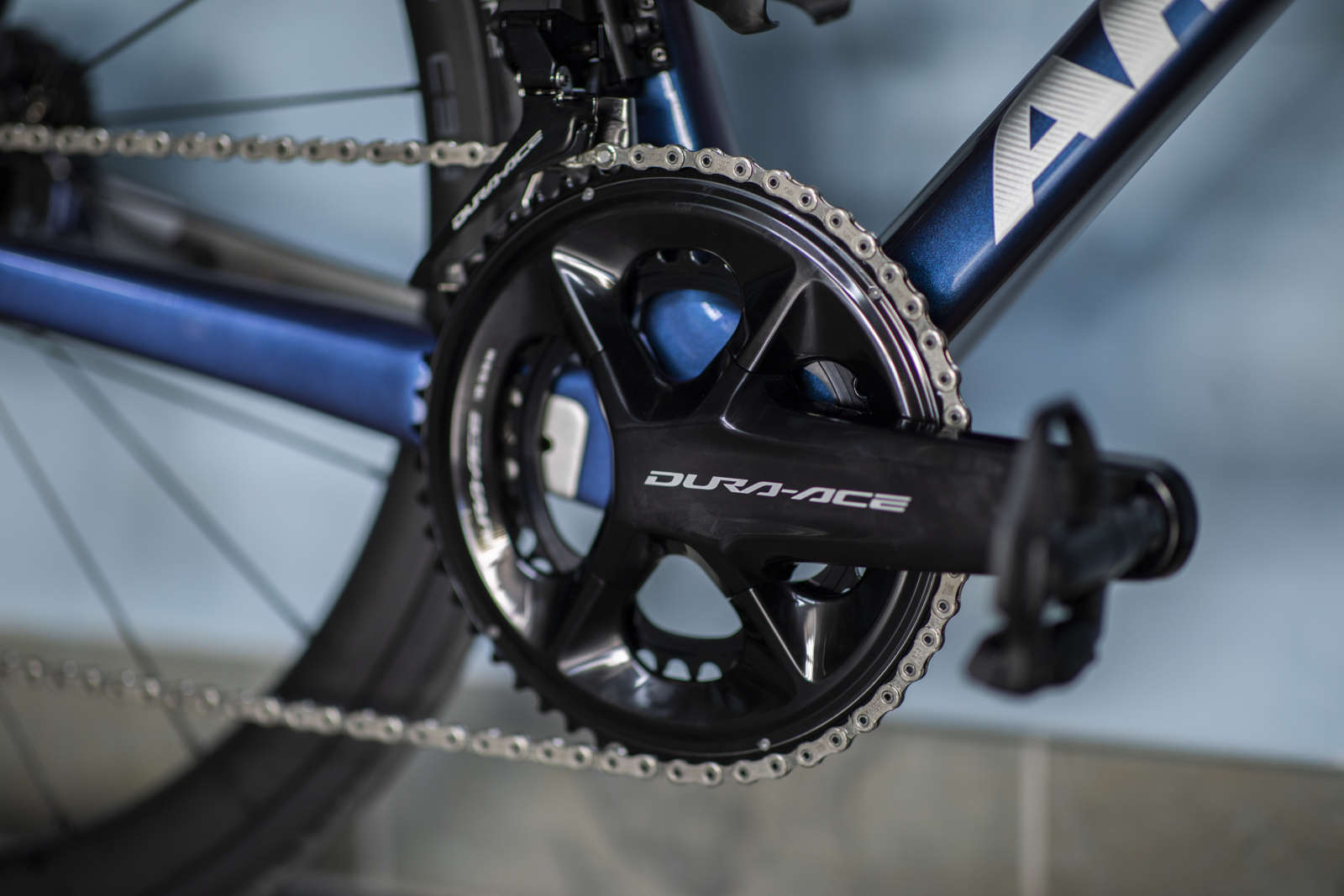
It tried to mess with the Hyperglide+, especially while sprinting and upshifting. Before my legs gave out, I was only able to get one chunky shift. It was more sonically unpleasant than a functional problem. In short, Hyperglide+ does improve shifting. You don’t have to “clutch” your pedalling stroke to ensure a smooth shift. You can just keep givin’ ‘er to the line.
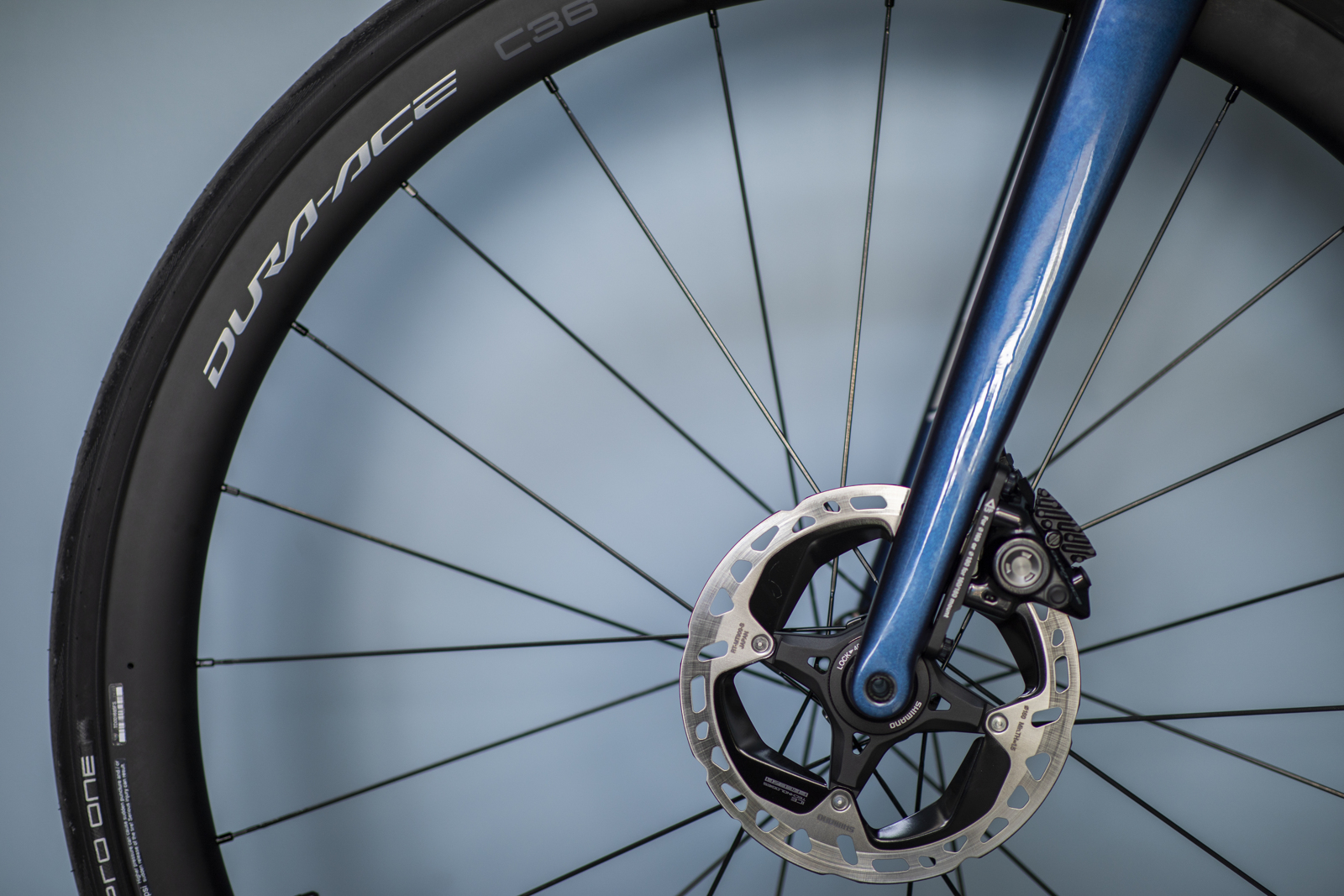
Another component straight up taken from the XTR mountain bike group set is the MT900 mountain bike rotor. It’s lighter than the Dura-Ace R9100 rotor. Shimano says the mountain bike disc offers a 66 per cent reduction in heat deformation compared with the RT900. “The MT came out a few years after the RT, the original road rotor, was developed,” Lawrence says. “We learned a few things. We could make it lighter. It was ever so slightly less expensive. The biggest point is that we noticed there was less deformation of the rotor as you heated it up with really heavy braking. So, it was an easy move to take the mountain bike one.”
And some borrowing from the ebike side
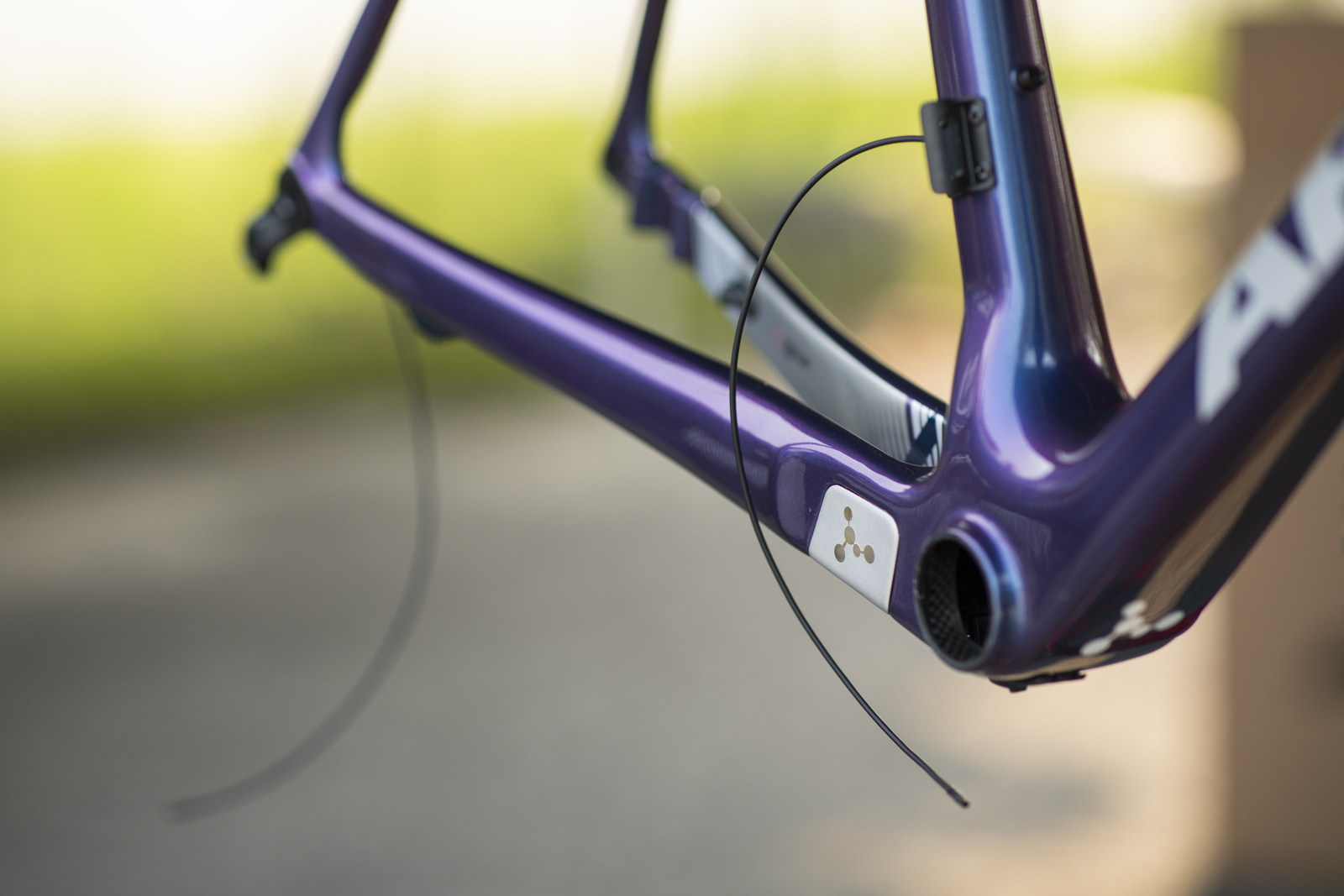
The wires that run from the Di2 battery to the derailleurs are the SD300. They come from the company’s ebike system, Steps. The SD300 is smaller than the previous Di2 wire and can carry more information.
A busier rear derailleur
The rear derailleur gains a few duties for the R9200 system. The R9150 has a junction box with a charging port, indicator LEDs and a button, as well as a D-Fly unit for ANT+ and Bluetooth connectivity. The functions of those two components have been put into the rear derailleur. It’s an elegant merging of duties that whittles down the number of components you need to put on your frame.
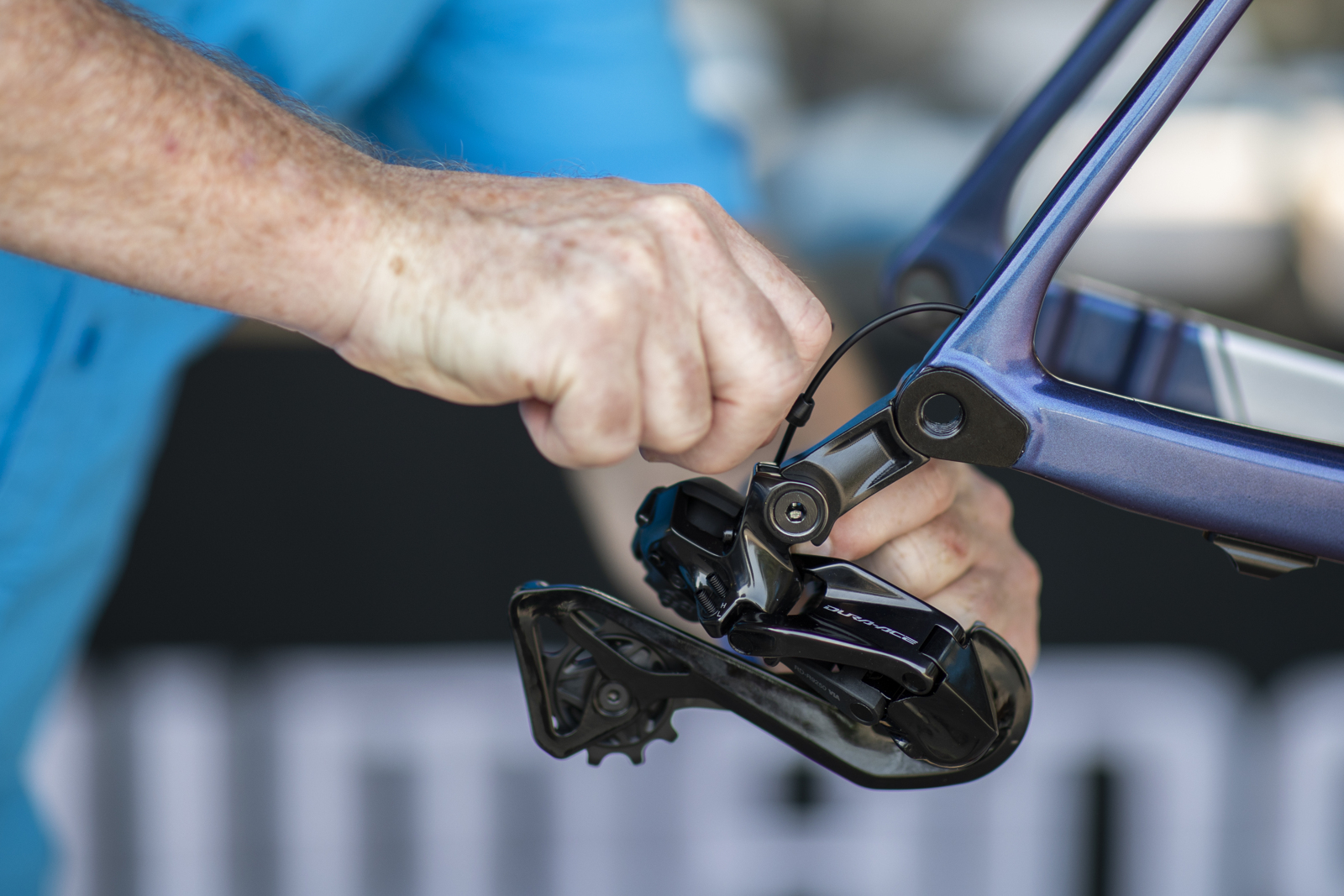
The rear derailleur works with both the 11-30 and 11-34 tooth cassettes. Its new charging cord not only works to bring juice to the Di2 battery, but you also use it to charge the power meter as well.
Levers get taller, buttons get longer
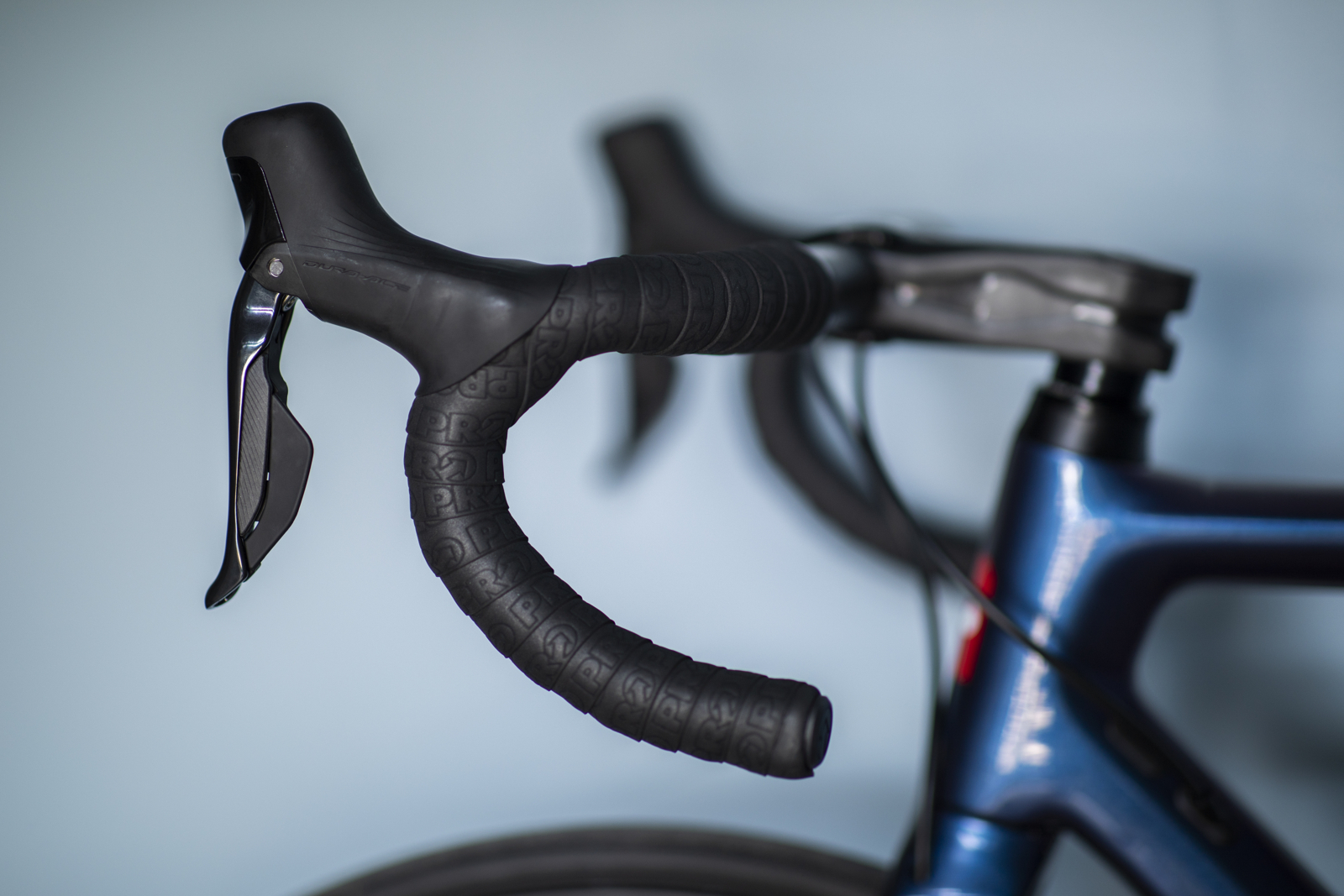
The levers have a noticeable redesign. The hoods are taller and hook inward slightly. Those changes are partly due to the wireless-shifting functionality that is now in the shifter. Shimano also added the height and the hook to improve ergonomics and comfort. There’s more room to grip the hoods—4.6 mm more length where your fingers wrap under the hoods. The shifter buttons are longer by roughly 5.1 mm. The buttons that move the chain to larger cogs or the large ring have a new texture and sit about 1.5 mm higher than their neighbouring buttons. These changes make it easier to shift when you’re in the drops. My fingers also seem to lie on the buttons better when my hands are at the hoods. My sense is that they will perform well in colder weather when my hands are stuffed into gloves. Returning to each new lever is a programmable auxiliary button at the top of the hood.
A smaller front derailleur

I find it a bit surprising how small the front derailleur is. Shimano says it has 33 per cent less frontal area compared with the R9150 version. It’s also lighter as it weighs in at 96 g. Still, this component has all the power to push the chain from ring to ring. As mentioned earlier, it performs its duties 45 per cent faster than the previous model.
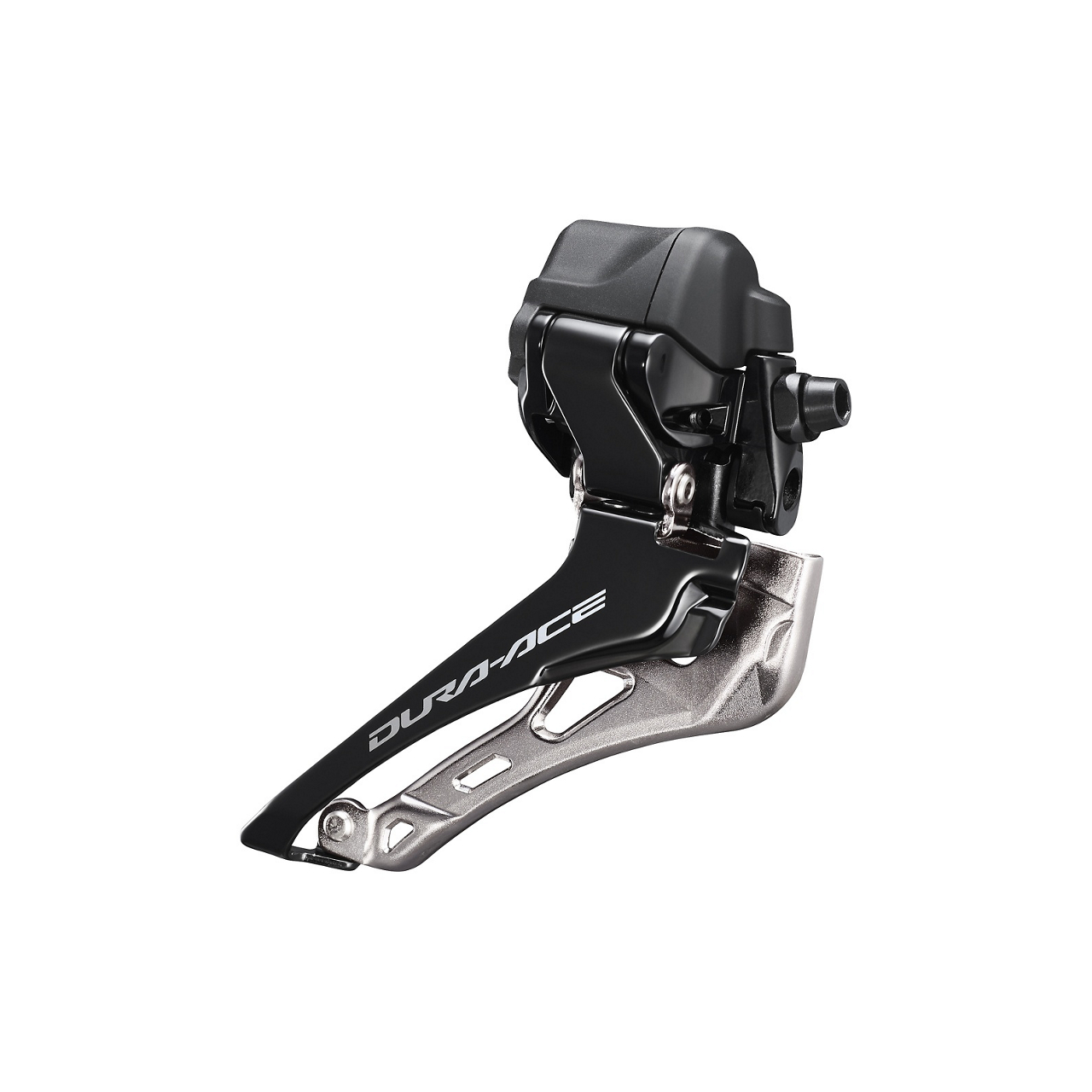
How do you manage all this shifting speed?
Fast shifting is great. It can be hypnotic to watch the chain run up or down the cassette. Managing that speed, however, is important. For the past two generations of Dura-Ace, you have been able to adjust the speed of the shifts. Note: the fastest speed isn’t necessarily always the best setting for you. Ben Pye of Shimano Canada explained to me that it really depends on how fast you spin your legs. If, say, you have a track background and spin the cranks really quickly, then a fast shift will work for you. If you are a low-cadence rider, then a slower shift speed is better. You can see this process at work when the bike is on the stand. If the shift speed is high and you turn the cranks slowly and shift, the chain will lag on a cog before shifting. Speed up the cranks, and the shift goes more smoothly and quickly. I tend to average in the low-80s when it comes to r.p.m., so a shifting speed in the middle of the system’s range seems to work well for me.
Three new wheels and a very ‘spline-y’ freehub body
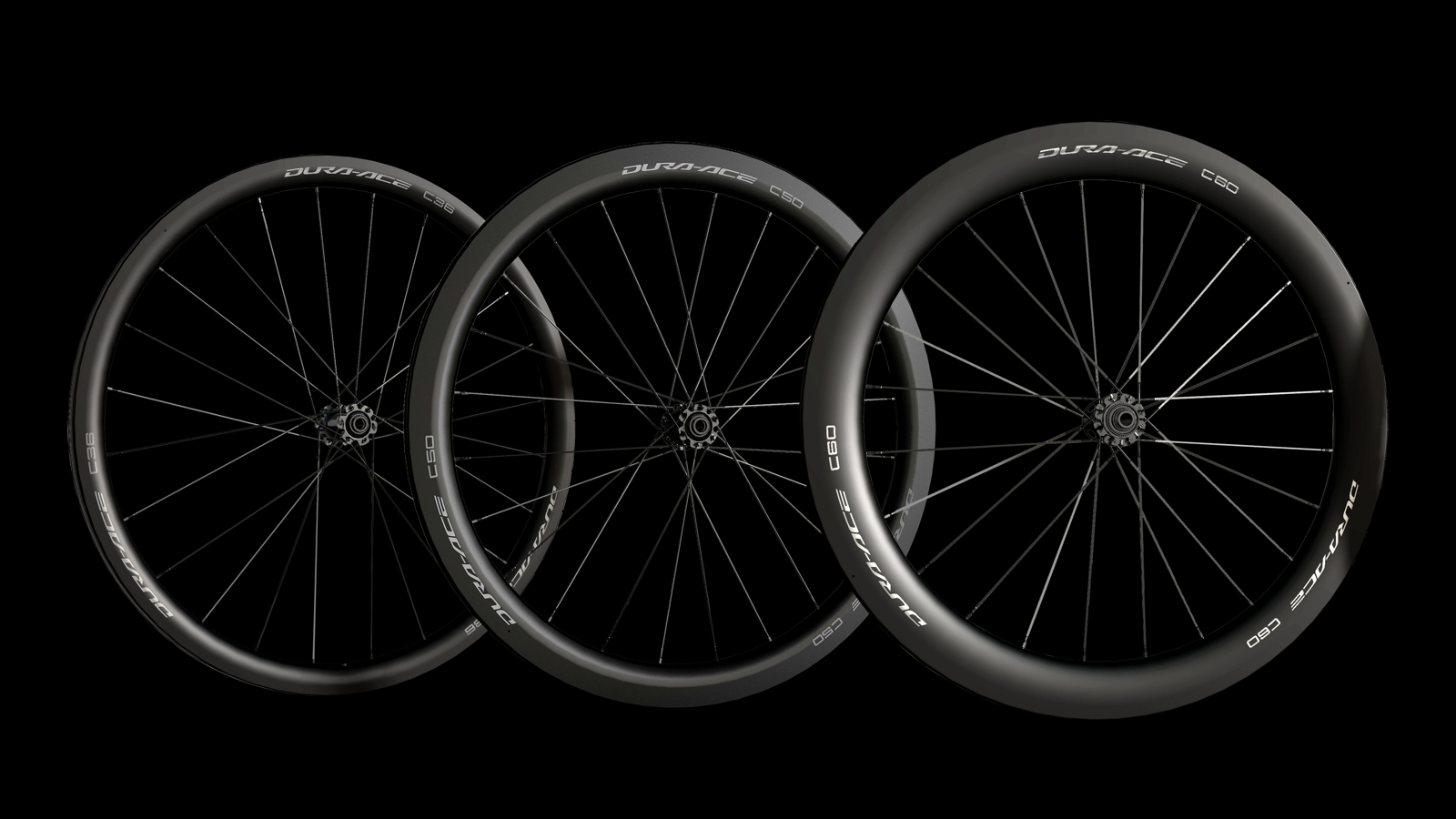
Shimano has three sets of new carbon Dura-Ace wheels. The C36 is for climbers, with rim depths of 36 mm and weight of 1,350 g. The C50 are for breakaway riders. Shimano aimed to balance aerodynamics, rigidity and weight (1,461 g) with these hoops. Finally, there’s the C60 for the sprinters. These 1,609 g wheels are all about aerodynamics and rigidity to perform well in sprints. To boost driving rigidity on the C60, the front wheel has a higher spoke count (2:1) compared with the 1:1 ratio of the C36 and C50. The C60 also has thicker spokes to increase power transfer.
All wheels have an inner rim width of 21 mm, up from 17 mm of the previous generation of hoops. They have external rim widths of 28 mm, and all continue to use cup-and-cone bearings. They run tubeless or clincher tires on their hooked rims. If you’re looking for tubular wheels, you’re going to have to look really, really hard. Shimano will be making some, but they are not a priority for the North American market.
The C36 is 55 g lighter than the previous C40 rim. The comparison may seem unfair as the old rim is 4 mm deeper. But, the new C50 rim is a mere 10 g heavier than the C40. The C50 save you 5.1 W of drag compared with the C40 and 1 W if you put it against the previous C60.
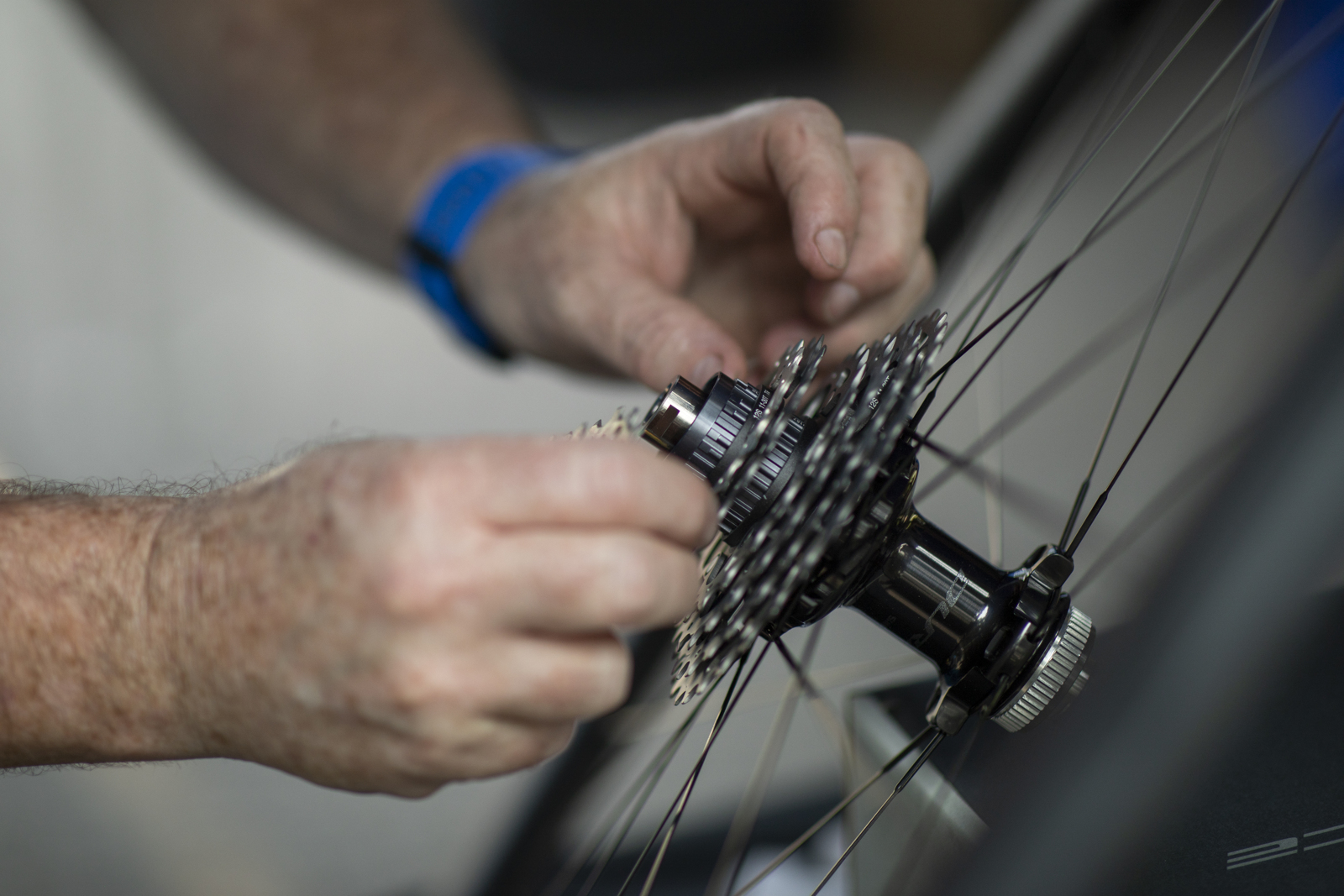
The new freehub on the wheels has a direct-drive engagement with clutch mechanism similar to that of the XTR hub on the mountain bike side. All the changes to the Dura-Ace hub have boosted its driving rigidity, important for power transfer from cassette to hub through to the spokes and rim. The freehub body is made of aluminum, which reduces its weight by 45 g. Because the freehub body is aluminum and not steel, designers had to make a new spline system for the cassette. It’s “spline-ier” than before. Only the new Dura-Ace 12-speed cassettes will fit on the Dura-Ace freehub. The steel freehub on the new Ultegra set, which has also just been released, is more inclusive. It can take 12-, 11- and even 10-speed cassettes. If you have an older set of hoops with a Shimano 11-speed hub that you really like, but would like to outfit with a Dura-Ace 12-speed cassette, you can.
A better disc brake system
Along with the rotors from the mountain bike lineup, the Dura-Ace braking system sees some other changes. In a new one-piece forged caliper, the space between the rotor and the pads has increased by 10 per cent. That change should minimize rotor rub.

At the levers, Shimano has tweaked its Servo Wave action. It gives you a quick engagement of the brakes followed by a refined modulation. Shimano says you now have a wider control by 13 per cent. I’m still exploring the new mechanics of the brakes. With that increase of space between the pads and the rotor, the levers do seem to travel more before they engage. Then, the initial grab is good, followed by excellent modulation so that I can find the right amount of stopping power.
What about rim brakes?
The Dura-Ace R9200 groupset does support rim brakes. Shimano, however, is not moving that feature forward with any new upgrades. The levers for rim brakes have to be wired with the new SD300 wire to the main Di2 battery, no wireless option there. (The new battery has three ports, one for the rear derailleur, one for the front mech and one for running anything at the handlebars that needs a direct connection.) Except for the texture on the hoods, the rim-brake levers are unchanged from the R9150 set. Production of rim-brake components is a low priority for Shimano, which will affect availability.
Dura-Ace R9200 cranksets
Shimano has introduced a new chaining combination: a whopping 54/40 tooth setup. It’s totally for pro legs. For the rest of us, there is the 52/36 tooth and 50/34 tooth. If you pair the 50/34 with an 11-34 cassette, you get a very spinnable 1:1 ratio with the 34-tooth ring and 34-tooth cog. The company has expanded fit options to include a 160-mm-long crankarm length. The full list of crankarm lengths also include 165, 167.5, 170, 172.5, 175 and 177.5.
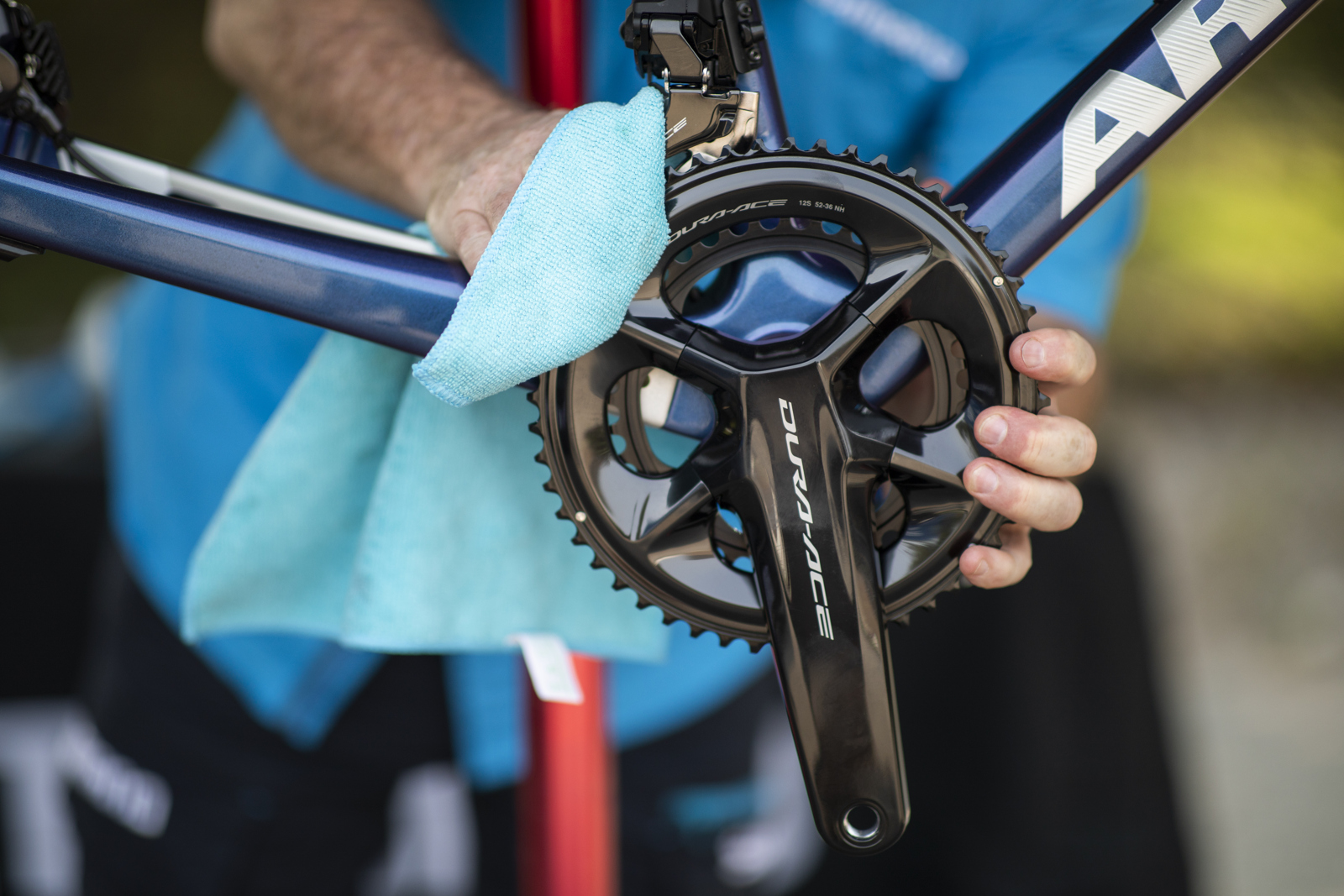
Dura-Ace Power meter
Sharp-eyed gear spotters will note that the chainring mounting bolts now have a more symmetrical arrangement. (The R9100 setup was asymmetrical.) The setup means the strain gauges of the power meter have new positions. The company says the accuracy of the power meter is 0.5 per cent better, from +/- 2.0 per cent to +/- 1.5 per cent. The new symmetry in the mounting bolt arrangement, and resulting arrangement of strain gauges, is likely a factor in that improvement, as well as firmware updates. That software also works to compensate for temperature changes. The rest of the guts of the dual-sided power meter are mostly the same as the R9100 model. The transmitter has a new location on the crankset. There’s still a zero-offset button. As mentioned, the charging cable for the power meter is the same as the Di2 battery charger used at the rear derailleur. Shimano says the power meter battery should last more than 300 hours on a single charge.
Wait! Weight? Do tell me
Shimano says the R9200 is 21.2 g heavier than the R9150. That comparison is with a 52/36 tooth crankset with power meter and 11-30 tooth cassette. For more information, see Weights and Canadian pricing for the new Shimano Dura-Ace R9200 group.
You should be able to see the new group on complete bikes later in September. Aftermarket availability should start in October.
First Impressions
Here’s something that might not surprise you: the shifting of the new Dura-Ace groupset is stunning. Like any good tester, I tried to mess with the Hyperglide+ chain and cassette by sprinting and shifting up with the system under load. I couldn’t get a true mis-shift. It might take someone with more powerful legs than mine.
I do like the cog progression on the 11-30 cassette, especially around the 15-, 16- and 17-tooth sweet spot. With the progression of SRAM’s 12-speed eTap Red AXS, you need to adjust your cadence noticeably as you move between certain cogs. With the new Dura-Ace system, your cadence can stay fairly steady. The gearing feels as if it works better on the flat to rolling roads I frequent the most. I can find a gear that matches the grade and my output easily. I even feel fast or at least efficient when my legs aren’t at their best.
I’ve tinkered a bit with putting the new 12-speed cassette on an 11-speed hub. It’s interesting how the cutouts for the new spline system work with the old. Curiously, I found it difficult to get the 13-tooth cog back on the freehub body that it was designed for. This sticky cog could just be a glitch in my cassette. I’m keen to try out the 11-34 tooth cassette to compare and to enjoy the wider gearing range.
The redesigned levers are comfortable. I’m not sure I really notice the boost in spacing for my grip at the hoods even with quick back-to-back comparisons with the R9100 levers, but the increased hood height does make for a more secure-feeling perch. The feel of the new shifter buttons is really good from both in the drops and on the hoods.
Following the launch of the Dura-Ace R9200 group, I’m going to keep riding it and learning more about it. The power meter should be making its way to me in the next few months. Overall, I’m really interested in finding out how “flawlesser” this groupset is.
